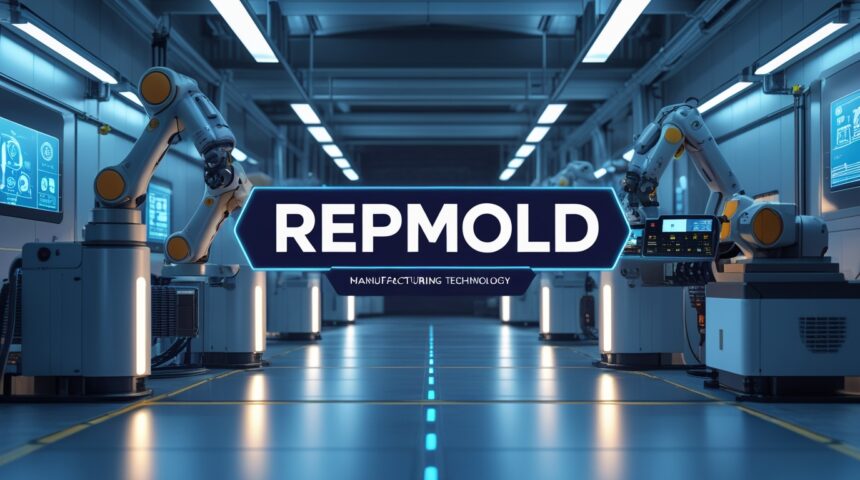When we hear the word repmold, it instantly sparks ideas about shaping, copying, or reproducing something in a precise manner. At its core, repmold is not just a single technology but a concept that can stretch across industries, from manufacturing to design, education, and even digital spaces. It represents the blend of two simple but powerful ideas—replication and molding—which together carry the potential to transform how we create, duplicate, and improve the things around us.
In this article, we’ll dive into what repmold means, why it matters today, and how it connects to real-world innovations. We’ll also look at where this concept might be headed in the future.
Understanding the Core of Repmold
At a simple level, repmold points to technologies and systems that help us replicate models or shape designs into tangible products. Think of it as a bridge between imagination and reality. On one side, you have an idea or a design, and on the other side, you have the physical or digital product that emerges.
If you’ve ever seen a 3D printer at work, you’ve witnessed a version of repmold in action. A digital blueprint is turned into a real object layer by layer. Similarly, when manufacturers create molds for automobile parts, toys, or even kitchenware, they’re essentially following the principle of repmold—reproducing something with accuracy and consistency.
What makes this concept powerful is that it’s not limited to physical materials. Even in digital modeling, simulations, and design systems, the repmold approach allows us to take a model and replicate it across platforms, environments, or use cases.
Why Repmold Matters in Today’s World
We live in a time when speed, accuracy, and customization matter more than ever. People expect products that not only meet high standards but also reflect personal preferences. Businesses, in turn, are under pressure to innovate while cutting costs and reducing waste.
Repmold fits perfectly into this modern equation because it allows:
-
Efficiency: Once a model or mold is created, it can be used multiple times, saving both time and resources.
-
Consistency: Every replicated piece follows the same standard, ensuring uniformity across production.
-
Customization: With digital tools, repmold systems can tweak or personalize designs without starting from scratch.
-
Scalability: A single idea can be scaled into thousands or millions of products with the right mold or replication technology.
These benefits explain why repmold is not just a concept but a growing trend shaping multiple industries.
Applications of Repmold in Manufacturing
Manufacturing is perhaps the clearest example of repmold at work. From large factories to small workshops, molds and replication systems are everywhere.
Take injection molding for instance. A mold is created for a product, such as a plastic bottle cap, and then thousands or even millions of identical caps can be produced with minimal variation. The initial effort of designing the mold pays off in mass production.
Another area is automobile manufacturing. Car parts need to be precise, durable, and consistent. Repmold systems ensure that every piece fits perfectly, whether it’s a dashboard component, a seat frame, or a mechanical part under the hood.
Even consumer electronics—phones, headphones, and chargers—depend heavily on molding technologies to deliver sleek and reliable designs. Without repmold principles, the mass availability of affordable electronics would be impossible.
Repmold in 3D Printing and Prototyping
The rise of 3D printing has pushed repmold into new territory. Traditionally, molds were expensive to create, especially for prototypes. But with 3D printing, companies and individuals can replicate designs quickly without investing in large industrial molds.
Imagine an architect who wants to test a building design. Instead of waiting weeks for a traditional model to be built, a 3D printer can replicate the digital blueprint into a physical model within hours. This is repmold in action—making the abstract tangible with minimal effort.
Prototyping also benefits from this concept. Startups can test multiple product designs before committing to mass production. This flexibility reduces risks, encourages creativity, and speeds up the innovation cycle.
Digital Repmold: Beyond Physical Products
It’s easy to think of repmold in terms of physical manufacturing, but the digital world has embraced it too. Think about software modeling, simulations, and digital twins. These systems create models of real-world objects or processes that can be replicated, tested, and improved digitally.
For example, in healthcare, digital repmold systems allow doctors to simulate surgeries on virtual organs before performing them on patients. In aviation, engineers replicate flight scenarios digitally to test aircraft safety without real-world risks.
Digital repmold not only saves money but also reduces risks and expands possibilities that physical replication alone cannot achieve.
Repmold and Sustainability
One of the most important conversations today is around sustainability. The world is looking for ways to reduce waste, cut emissions, and protect resources. Repmold contributes to this goal in several ways:
-
Less Material Waste: Modern molding and replication methods use precise amounts of material, minimizing leftovers.
-
Efficient Production: By reusing molds, industries reduce the need for constant new tooling.
-
Repair and Replacement: Instead of discarding entire products, companies can replicate specific parts for repair, extending product lifecycles.
-
Local Manufacturing: 3D printing and digital replication allow products to be made closer to consumers, reducing shipping and carbon footprints.
These sustainable benefits make repmold a practical choice not just for businesses but also for a planet in need of smarter solutions.
Repmold in Education and Creativity
Another exciting dimension of repmold lies in education and creativity. Schools, universities, and training centers now use replication technologies to make learning more interactive and hands-on.
For instance, students studying biology can use 3D-printed models of organs or cells to better understand complex structures. Engineering students can replicate machine parts to practice assembly without needing costly resources. Even art classes are embracing repmold tools to let students mold, replicate, and experiment with creative designs.
In the creative space, repmold opens doors for artists, designers, and hobbyists to bring their ideas to life without relying on mass-manufacturing companies. A jewelry designer, for example, can replicate a unique piece through molds or 3D printing and sell customized designs to clients.
Challenges Facing Repmold
While repmold is full of promise, it’s not without challenges. Some of the main hurdles include:
-
High Initial Costs: Creating precise molds or advanced replication systems can be expensive.
-
Intellectual Property Concerns: Easy replication raises issues about design ownership and copyright.
-
Material Limitations: Not all materials can be molded or replicated efficiently, especially in high-tech fields.
-
Skill Requirements: Proper use of repmold technologies requires technical expertise and training.
Overcoming these challenges will determine how widely and effectively repmold spreads across industries in the years ahead.
The Future of Repmold
Looking ahead, repmold is set to evolve alongside advances in technology. Artificial intelligence and machine learning are expected to merge with replication systems, making them smarter and more adaptive. Imagine molds that can adjust themselves based on real-time feedback or replication systems that predict and correct errors before they happen.
Additionally, materials science is likely to unlock new opportunities. Biodegradable, lightweight, and stronger materials will expand what can be molded or replicated sustainably.
On a broader scale, the repmold concept may become a foundation for personalized manufacturing—a future where consumers design their own products digitally and have them replicated locally in a matter of hours.
Final Thoughts
Repmold is more than a buzzword; it’s a philosophy of creation that connects ideas with outcomes. Whether we look at manufacturing plants, classrooms, design studios, or digital labs, the essence of repmold is there—helping us replicate, mold, and bring ideas into reality.
Its importance will only grow as society leans toward faster production, personalization, and sustainable practices. The journey of repmold is just beginning, but one thing is clear: it’s shaping the future of how we build, learn, and live.




